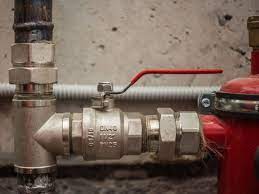In the realm of home maintenance and emergency preparedness, few components play as crucial a role as the main water shut-off valve. Often hidden away and overlooked, this unassuming device serves as a silent guardian, ready to spring into action when disaster strikes. In this blog, we’ll dive deep into the significance of the main water shut-off valve, exploring its functions, importance, and how understanding it can save you from costly water-related mishaps.
The Role of the Main Water Shut-Off Valve: The main water shut-off valve, typically located near where the water line enters your home, is the control center for your property’s water supply. Its primary function is to allow you to shut off the flow of water to your entire house. This ability becomes invaluable in emergencies, such as burst pipes, leaking appliances, or other plumbing catastrophes that can lead to significant water damage. By promptly closing the main water shut-off valve, you can prevent further flooding and minimize the potential destruction to your home.
Emergency Preparedness: One of the most compelling reasons to familiarize yourself with the main water shut-off valve is emergency preparedness. When a sudden leak or pipe burst occurs, every second counts. Knowing the location of the valve and how to operate it can mean the difference between a minor inconvenience and a major disaster. Taking the time to educate yourself and your family about the main water shut-off valve empowers you to act swiftly in high-pressure situations, safeguarding your property and belongings.
Steps to Locate and Operate the Valve: Locating and operating the main water shut-off valve might seem intimidating, but it’s a straightforward process. Start by identifying where the water line enters your home; this is usually in your basement, crawl space, or utility room. Once you’ve located the valve, turn it clockwise (to the right) to shut off the water. Remember that different homes may have different types of valves, such as a gate valve or a ball valve, so it’s a good idea to familiarize yourself with the specific type you have.
Regular Maintenance and Testing: Like any other component of your home, the main water shut-off valve requires occasional maintenance and testing. Over time, valves can become stiff or corroded, making them difficult to turn. Regularly exercising the valve by turning it on and off a few times can help keep it in proper working condition. Additionally, it’s wise to check the valve’s functionality every few months to ensure it hasn’t seized up due to lack of use.
